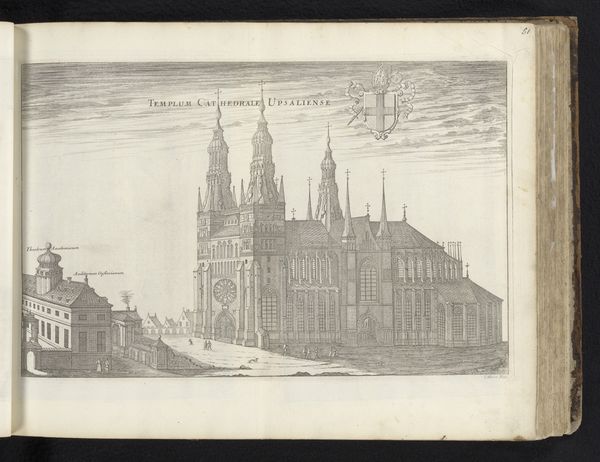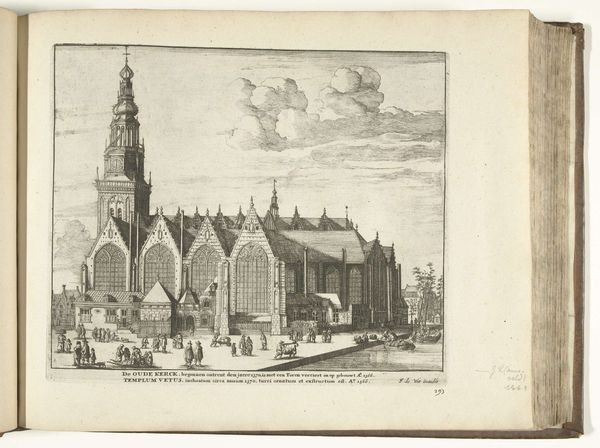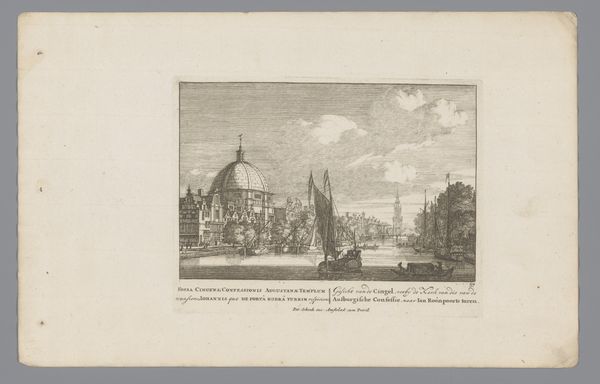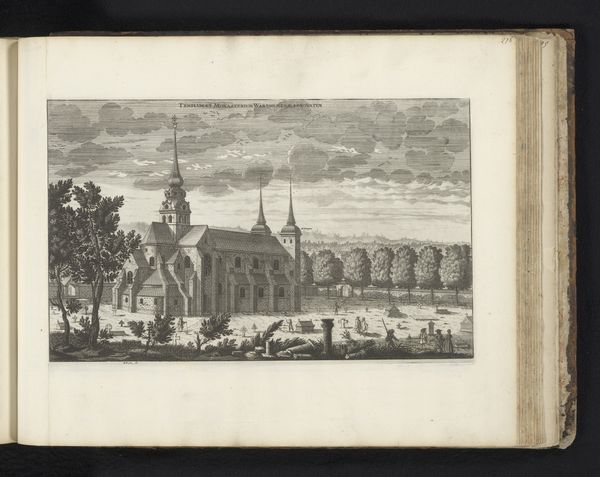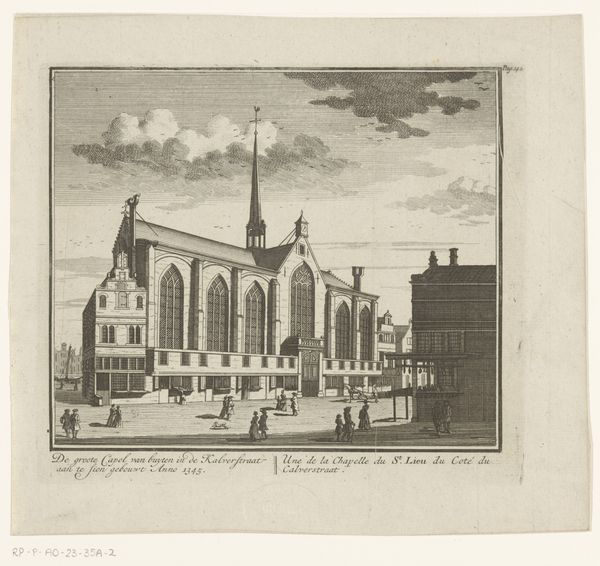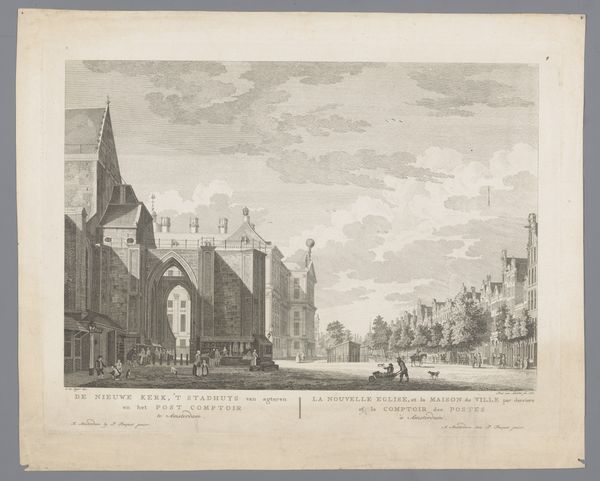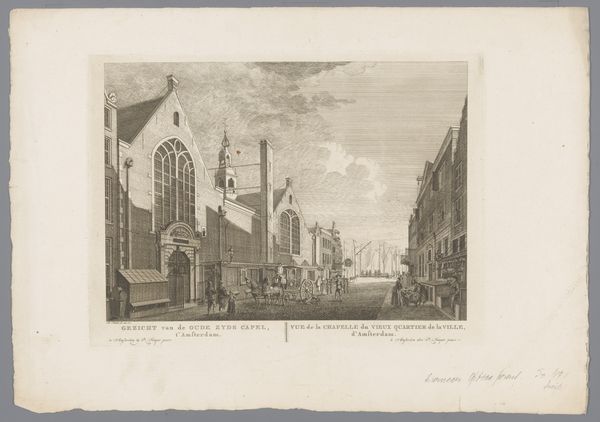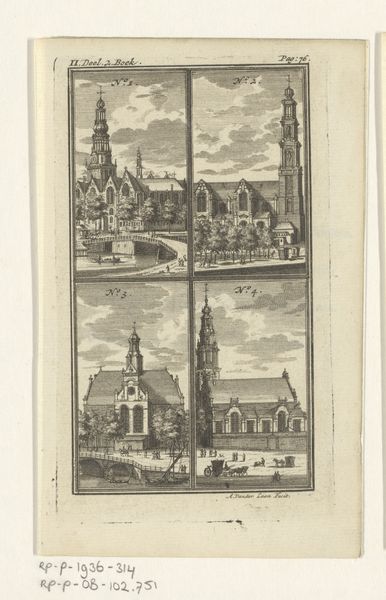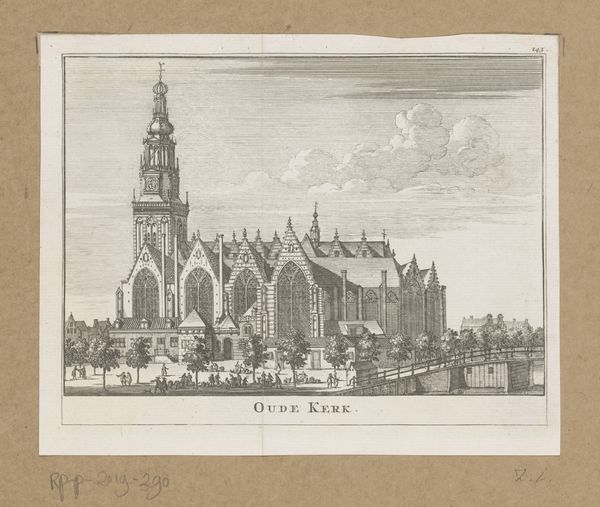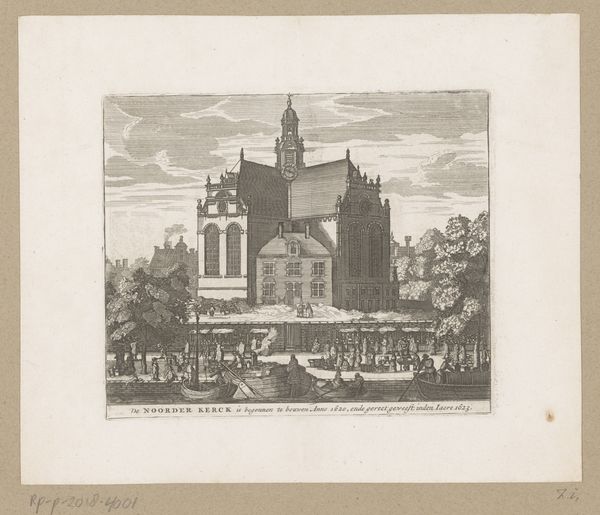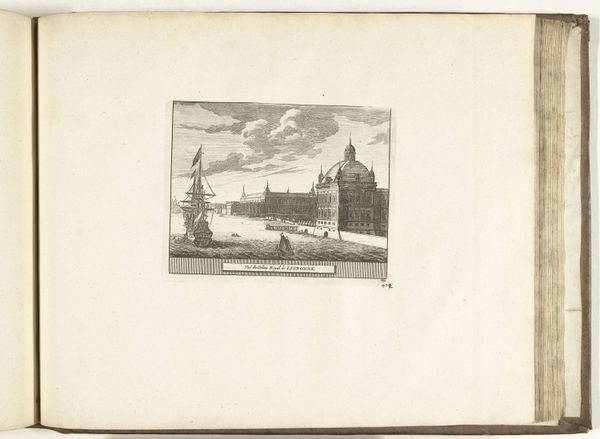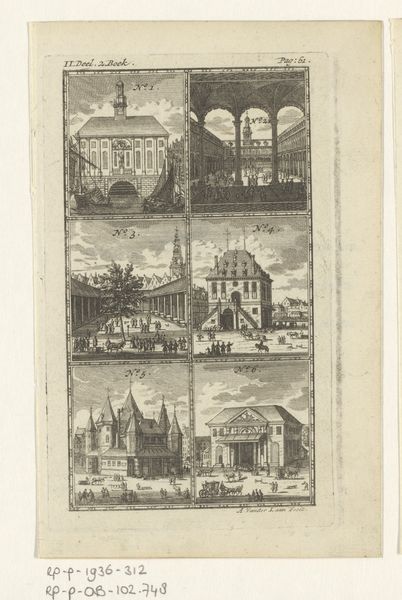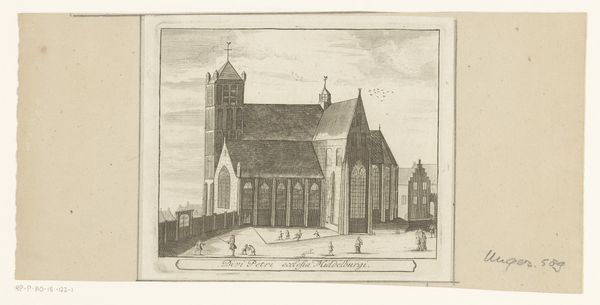
print, engraving, architecture
#
medieval
#
baroque
# print
#
landscape
#
form
#
line
#
cityscape
#
engraving
#
architecture
Dimensions: height 250 mm, width 179 mm
Copyright: Rijks Museum: Open Domain
Erik Reitz made this print of Linköping Cathedral using the technique of engraving. As a process, engraving involves the use of a tool called a burin to carve lines directly into a metal plate. Ink is then applied to the plate, and wiped away from the surface, remaining only in the incised lines. When paper is pressed against the plate, the ink is transferred, creating a reverse image of the original design. The final print reflects the precision and control required to manipulate the burin, capturing the detail and texture of the cathedral’s facade. The nature of engraving allows for the mass production of images. Prints such as this would have circulated widely, contributing to a broader understanding and appreciation of architectural landmarks, a precursor to modern-day photography. Consider the skilled labor involved in this kind of image-making, and the historical context of craft and artistic production. It serves as a reminder that all art has an origin in skilled work.
Comments
No comments
Be the first to comment and join the conversation on the ultimate creative platform.
